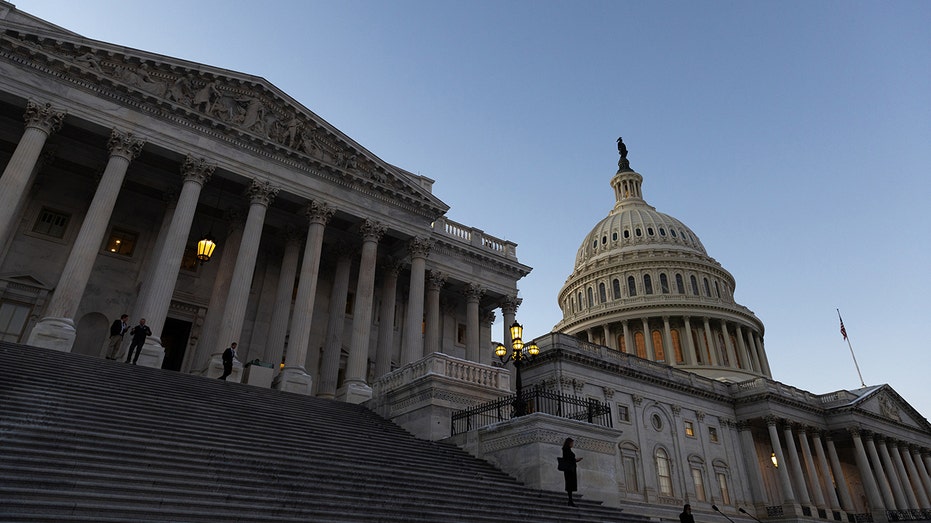A million simulations show US debt is on an 'unsustainable' path
US national debt is on 'unsustainable' course, simulation shows
Treasury Secretary Janet Yellen talks inflation risks, credit card debt
Treasury Secretary Janet Yellen discusses inflation risks, taxes and credit card debt in an exclusive interview with FOX Business.
The U.S. is almost certainly on an unsustainable path with regard to the astronomic rise in its national debt, according to a million simulations run by Bloomberg.
Bloomberg reported Tuesday that it conducted a million simulations on the U.S. debt outlook and found 88% of them show borrowing is on an "unsustainable path."
The findings come after a forecast by the Congressional Budget Office that indicates the national debt will grow to an astonishing $54 trillion in the next decade, the result of an aging population and rising federal health care costs. Higher interest rates are also compounding the pain of higher debt.
Payments are expected to triple from nearly $475 billion in fiscal year 2022 to a stunning $1.4 trillion in 2032. By 2053, the interest payments are projected to surge to $5.4 trillion. To put that into perspective, that will be more than the U.S. spends on Social Security, Medicare, Medicaid and all other mandatory and discretionary spending programs.
THE US IS PAYING A RECORD AMOUNT OF INTEREST ON ITS NATIONAL DEBT

The U.S. Capitol in Washington, D.C., is seen on Jan. 17. (Julia Nikhinson/Bloomberg via Getty Images / Getty Images)
When factoring in the market's current outlook on interest rates, the debt-to-GDP ratio is expected to rise to 123% in 2034, according to Bloomberg. But that's a fairly optimistic outlook, given the assumption in Washington that the sweeping tax law passed in 2017 by former President Donald Trump will likely be extended once certain provisions expire in 2025.
In a "higher simulation" scenario, the debt-to-GDP burden could be as high as 133.9% in 2034 and 185% in 2050, the report shows.
Should that debt materialize, it could risk America's economic standing in the world.
US NATIONAL DEBT TRACKER FOR APRIL 1, 2024: SEE WHAT AMERICAN TAXPAYERS (YOU) OWE IN REAL TIME
US becomes more 'vulnerable' with 'more debt': Phillip Swagel
Congressional Budget Office Director Phillip Swagel analyzes where lawmakers stand to slow down debt growth.
The national debt, which measures what the U.S. owes its creditors, hit $34.5 trillion on Friday afternoon, according to new data published by the Treasury Department. By comparison, just four decades ago, the national debt hovered around $907 billion.
The spike in the national debt follows a burst of spending by President Biden and Democratic lawmakers.
As of September 2022, Biden had already approved roughly $4.8 trillion in borrowing, including $1.85 trillion for a COVID relief measure dubbed the American Rescue Plan and $370 billion for the bipartisan infrastructure bill, according to the Committee for a Responsible Federal Budget (CRFB), a group that advocates for reducing the deficit.
While that is about half of the $7.5 trillion that former President Trump added to the deficit while he was in office, it's far more than the $2.5 trillion Trump had approved at that same point during his term.

President Biden speaks during an event at the Old Post Office in Chicago on June 28, 2023. (Taylor Glascock/Bloomberg via Getty Images / Getty Images)
CLICK HERE TO READ MORE ON FOX BUSINESS
Biden has repeatedly defended the spending by his administration and boasted about cutting the deficit by $1.7 trillion.
"I might note parenthetically: In my first two years, I reduced the debt by $1.7 trillion. No president has ever done that," Biden said recently.
However, that figure refers to a reduction in the national deficit between fiscal years 2020 and 2022. While the deficit did shrink during that time period, that is largely because emergency measures put into place during the COVID-19 pandemic expired.
The White House has also tried to blame Republicans for the astronomical rise in debt in recent years.






















